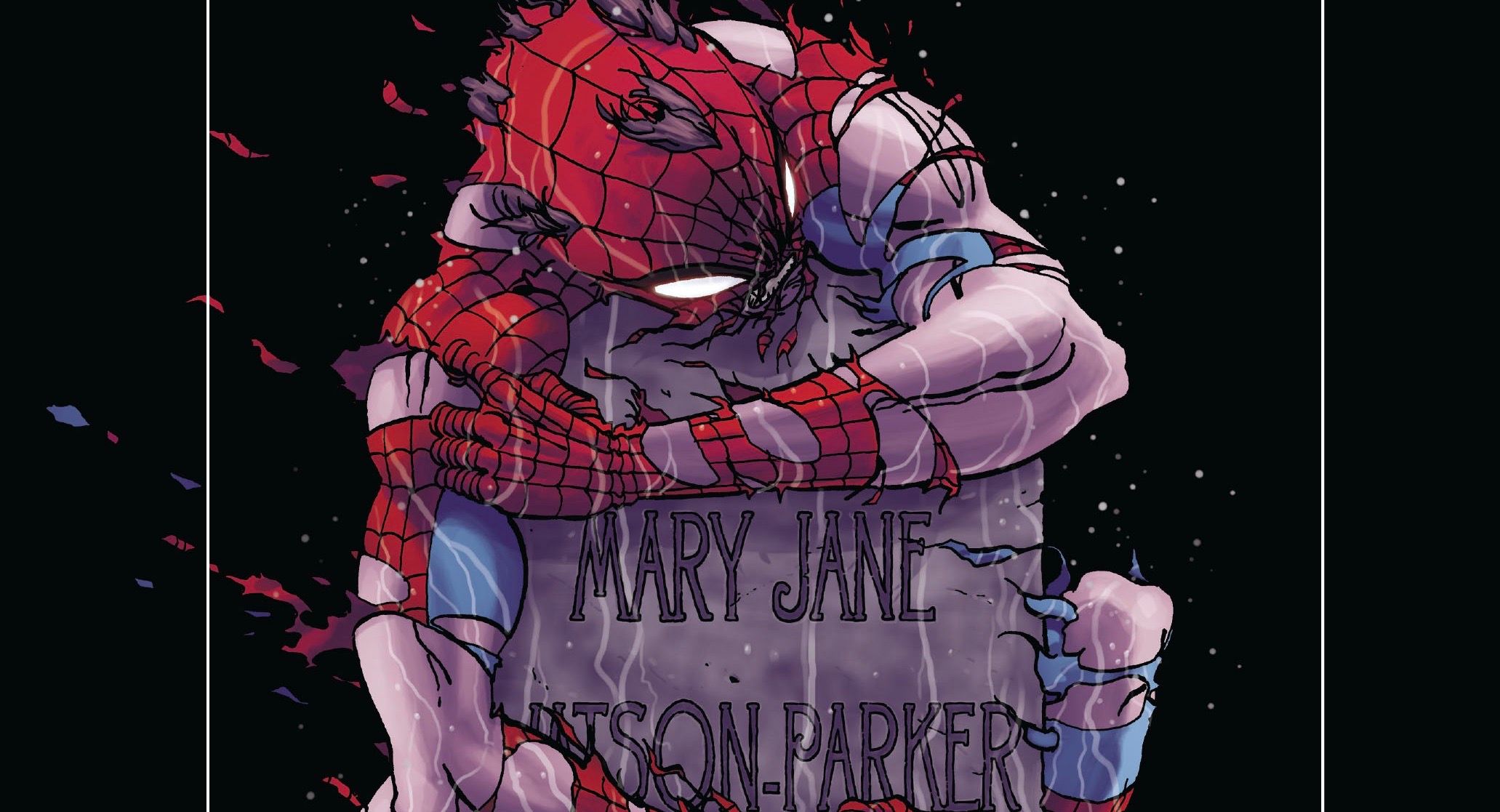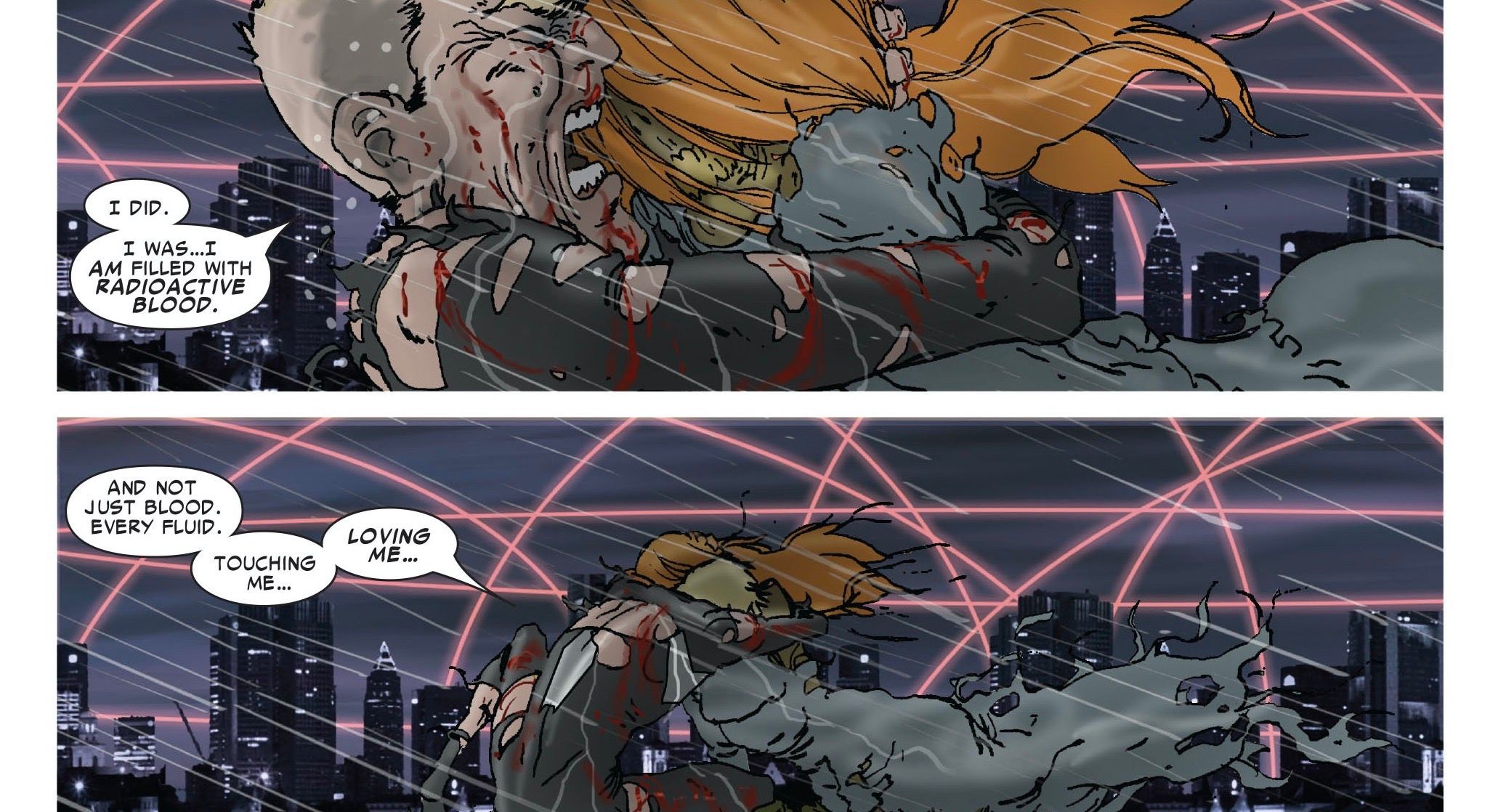A dystopian nightmare has befallen New York City, in Kaare Andrews’ Spider-Man: Reign, originally published as a four-part limited series between 2006 and 2007. The story takes place thirty years into the future, where a new regime has taken over Manhattan. It’s been three decades since the people of NYC have seen any masked super-heroes and also since they’ve seen any terrorists. That's a long time to go without a friendly neighborhood Spider-Man. In City Hall, a new mayor is quietly seizing control of the whole island and plans to create a force field around it to “protect” its citizens. “No one in! No one out!”, goes the slogan, and the people of New York are frightened enough to accept it. In the streets, militarized police are patrolling the streets and keeping the peace with violence.
If heroes are allowed to grow old in comics, rarely does it mean they're allowed to have a happy ending. The movies brighten things up, but all too often comic books offer up bleak endings to well-loved characters. Spider-Man: Reign presents a vision of Peter Parker in which grief, age, and the sheer weight of responsibility have driven him mad. Not the kind of insanity that gets locked away in asylums, but the quiet, soul-destroying madness of solitude and a mind that has experienced too much pain. Sound dark? It is. And it gets darker still.
Related: Iron Man & Spider-Man’s MCU Relationship Is Actually Based On Comics
Readers learn in pieces throughout the first two issues what has happened to Peter since burying the red and blue tights, and it’s a bittersweet cocktail of love and tragedy. The good news is he wasn’t killed protecting the city or the world from forces that would destroy it, and he married the girl of his dreams Mary-Jane Watson. He lost Aunt May somewhere along the way, but there’s nothing to suggest that she was taken before her time. The bad news is he’s nearly destitute—again—can’t seem to hold down and job, and there’s a voiceless red-headed lady specter haunting his decrepit apartment. So what happened?
It takes until issue #3, the penultimate issue of the limited series before readers discover what happened to Mary-Jane. To no one's surprise, she was killed by Spider-Man, but not in a way anyone would’ve expected, including the web-slinger. She wasn’t killed in a bomb blast, she wasn’t taken hostage by one of Spidey’s enemies, or any kind of targeted or collateral violence for being associated with him. It was violence on a cellular level, radioactivity invading her body from the inside and spreading cancer. Turns out, the radioactive spider bite which gave Peter his amazing powers also corrupted his bodily fluids with poisonous radiation. To put it bluntly, Spider-Man killed Mary-Jane with radioactive sperm.
It isn’t exactly hard to imagine, then why Peter Parker would’ve gone off the deep end, especially after his other life’s purpose - superheroing - was outlawed. It’s a vile pill to swallow for Parker and readers alike. In too many ways does this choice cross the line into bad taste, and the ridiculous. It's hard to believe that at not once in his long career as Spider-Man would his potentially deadly radioactivity become an issue before settling with Mary-Jane. Uncle Ben certainly didn’t have this in mind when told his nephew that “with great power comes great responsibility.”


